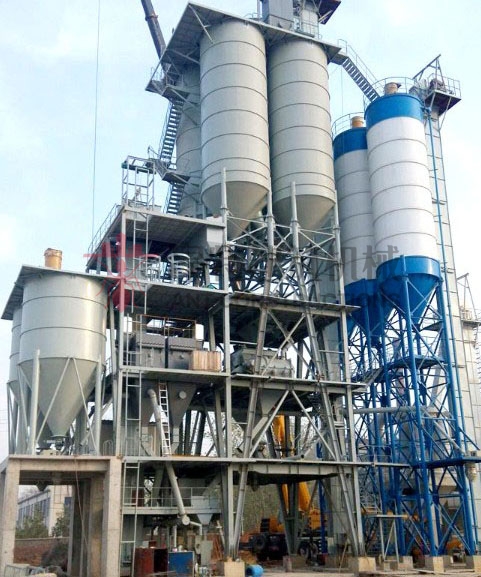Differences between dry mix mortar and dry mix concrete
Author:ANT CONSTRUCTIONS Comefrom: Createdate:2020/11/16 15:44:53 Hits:70
Differences between dry mix mortar and dry mix concrete

With the country's gradual emphasis on environmental protection, building energy maaterials and thermal insulation, various regions have gradually enforced external wall thermal insulation on urban buildings, and it is strictly forbidden to mix dry mortar on construction site. The application of ready dry premix render mortar has been very extensive, but during the application process, some production, applications and supervision insituate are confused about some concepts and performance indicators of ready dry premix render mortar. Professional ready dry premix render mortar mix machine manufacturer- Henan Ant Construction has the following analysis for these easily confused concepts, hope everyone can learn from it.
The higher the viscosity, the higher the strength. Strength usually refers to the physical performance index of the mortar after setting, and viscosity usually refers to the state of the mortar after mixing, which is an index in the construction process. There is no positive correlation relationship between viscosity and strength. There are many factors affecting the strength, and the viscosity is generally adjusted by the viscosity of the cellulose ether. The minimum viscosity of the cellulose ether is a few hundred Mpa.s, and the maximum viscosity can be 200,000 Mpa.s. The cellulose ether is selected according to the different uses of the ready dry premix render mortar.
Bonding strength and compressive strength
Bond strength is the maximum bonding force of the mortar on the base layer. There are shear strength and tensile (pulling) strength. The tensile strength is the ability of the mortar surface to resist the tensile force acting perpendicularly to the surface; the shear strength is the strength measured by applying parallel forces.
Compressive strength is the maximum value of the mortar when it is destroyed by applying pressure, it is generally the cohesive strength of the mortar. A high bond strength does not mean a high compressive strength, and a low compressive strength does not mean a low bond strength. There are two main aspects that two concepts are easily confused:
a. One is the choice of admixtures. The admixtures in concrete (early strength agent, antifreeze agent, etc.) are only tested for compressive strength when tested in concrete. For example, antifreeze additive is to test the loss rate of concrete compressive strength at low temperature. The main test index for dry mortar products is the bond strength. Some additives in mortar should be selected with emphasis of the bond strength. For example, the special early strength agent for dry mortar mainly refers to how much the early bond strength of the mortar is improved, it does not how much the compressive strength is improved. This is very critical. According to our experience, some concrete additives are directly applied to the mortar caused the bond strength of the mortar is greatly reduced, betterly speaking concrete addtives have a negative effect in mortar.
b. The second is to judge the bond strength by compressive strength index. The standard of tile bonding mortar does not require the compressive strength index, some people think that the tile bonding mortar is easy broken by hand (compressive strength index) and said the bonding strength low. This is because ceramic tile mortar mixed with polymer such as redispersible latex powder will significantly improve the bonding performance of the product, but will reduce the compressive strength.
But there are some exceptions: the flexibility index of external wall insulation plastering mortar only specifies the compression ratio, not specify the minimum value of the compressive strength which brings some problems to practical applications.
Waterproof and water resistant
The concept of waterproof and water resistance is mainly used in wall putty. Water resistance means that the material performance in the water environment does not change significantly, but waterproof means that water cannot penetrate. Wall Putty is only a leveling material before painting, it does not have and also not necessary have the performance of a waterproof. The standards of JG158 "Wall Putty for Building Interior Wall" and JG157 "Wall Putty for Building Exterior wall" only stipulate the water resistance of putty. After soaking the wall putty in water for a certain time, observe whether the putty layer changes. In the actual application process, some companies exaggerated the publicity saying that they produce waterproof putty, and some users often ask whether external wall putty is waterproof, actually this not correct.
Through the above analysis, everyone should has a better understanding of several confusing concepts of dry powder (mixed) mortar, and there will be one more choice in the use process in the future.







